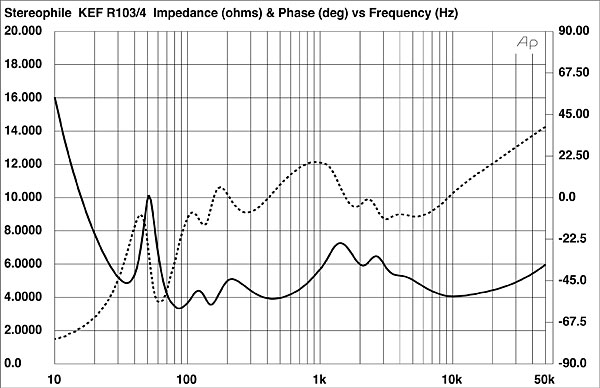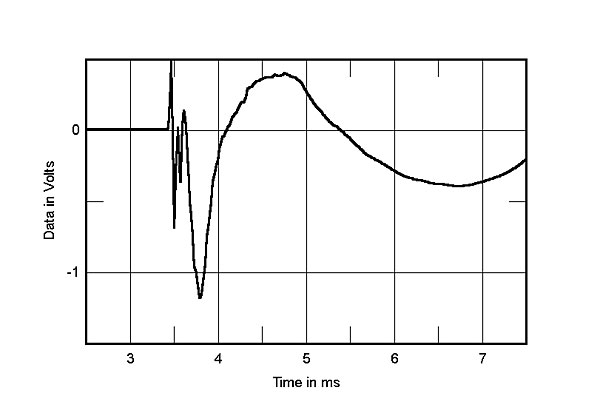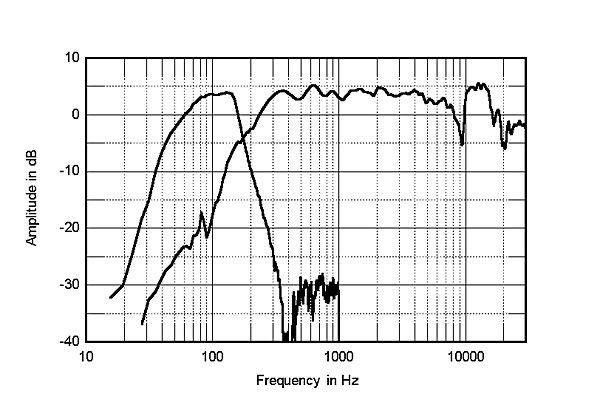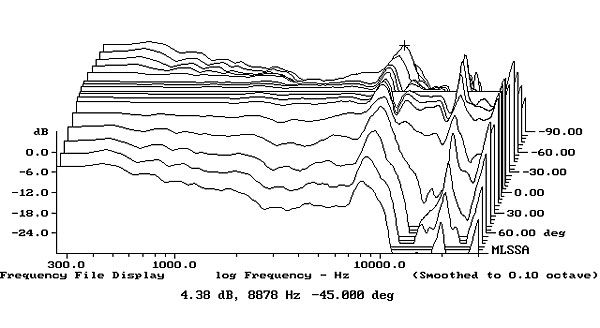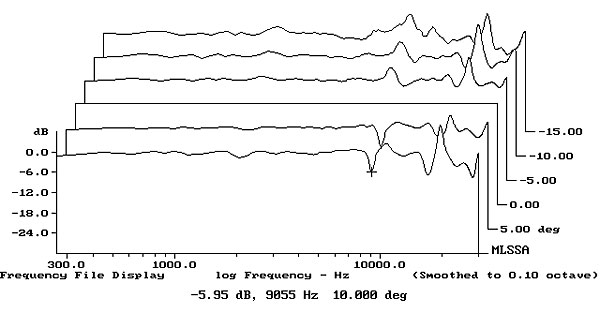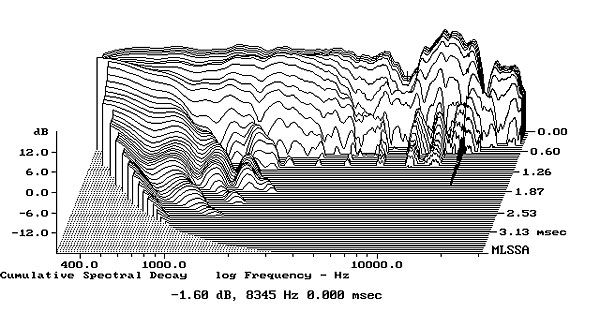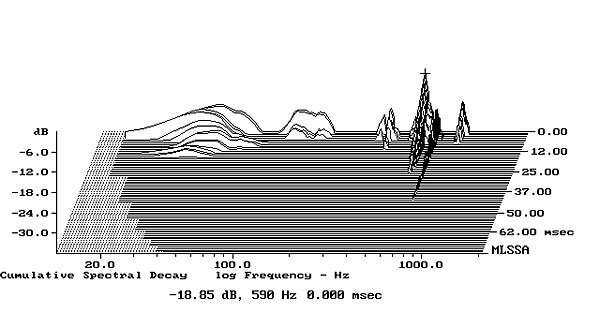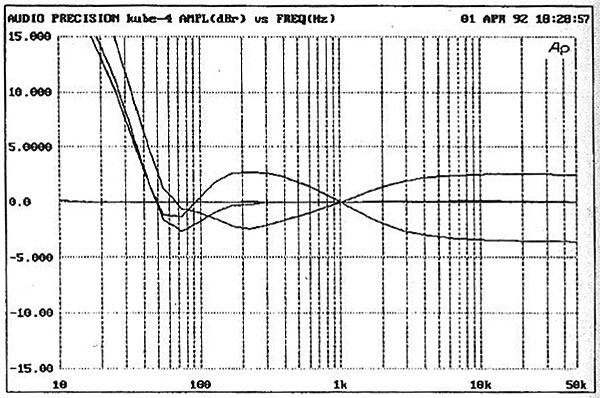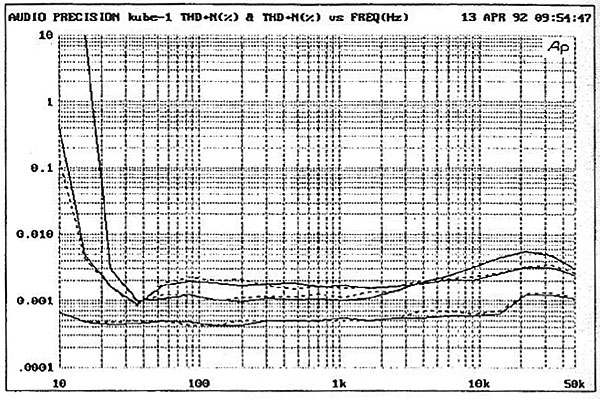| Columns Retired Columns & Blogs |
I think what you mean is something other than that the woofers in the KEF 103/4 operate IN phase. For there to be any pressure generated in the central chamber, and thereby generation of any velocity at the port, the drivers must be OUT of phase, both electrically and mechanically. That is to say that as one of them moves away from its' frame, the other moves toward its' frame. As a result, the pressure in the central chamber is increased in one half of a cycle, and decreased in the other half of a cycle. This is the actual arrangement that would create the situation you describe: when the pressure is at maximum in the central cavity, it will be at minimum in the opposing cavities at the ends of the enclosure.
The rod connects the woofers' frames, surely, as this arrangement would, in fact, reduce vibration as the manufacturer states, but only if the cones were moving opposite each other. If the woofers were moving in phase, the rod would serve only to equalize, or average, the vibration, but not reduce it.
There are some arrangements in professional loudspeakers that put the woofers out of phase both mechanically and electrically, on an ordinary baffle, with one facing into the cabinet (front-loaded) and one facing out (rear-loaded.) In this arrangement, the advantage is said to be a cancellation of nonlinearities caused by the woofers' suspension, with the result reportedly being measurably lower distortion.
